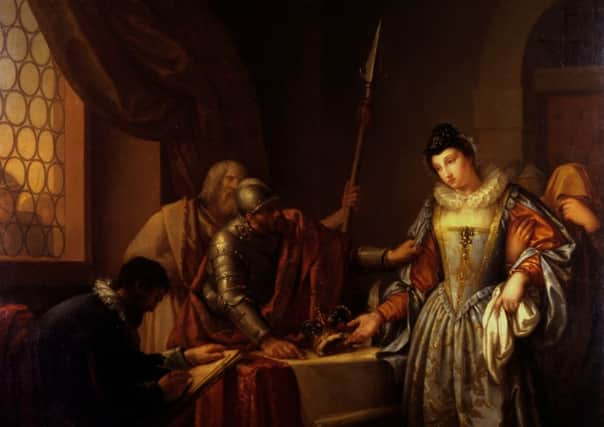Mary Queen of Scots: academics to study our fascination with the doomed queen


The research will bring together 40 international academics and curators to help understand how her legend has impacted on Scottish society and culture in the 400 years since the monarch’s death.
Over the four centuries, Mary’s legend has been depicted in popular culture and immortalised in music, books, plays, art and on coins and medals.
Advertisement
Hide AdAnd since 1895, the extraordinary life and death of the sixteenth-century queen continues to be told and retold on the big screen.
The latest film, Mary Queen of Scots, which opens in the UK on Friday 18 January 2019, centres on the royal rivalry between Mary and her cousin Elizabeth I.
Dr Steven Reid, a Scottish Historian based at the University of Glasgow’s College of Arts, and Anne Dulau-Beveridge, a curator at The Hunterian have been awarded funding for a two-year research network project on Mary from the Royal Society of Edinburgh.
It will examine in fine detail why the Queen retains such an enduring appeal.
Dr Reid said: “Our project will look at what is it about Mary’s life and her story that gives it such appeal and endurance – why does she remain such a source of fascination and debate?
“Why do historians, authors and artists continue to re-imagine her? To date, there have only been a handful of works exploring Mary’s posthumous reputation.
Advertisement
Hide Ad“This project will undertake a detailed and holistic assessment of Mary’s reputation and depiction in popular culture, from the end of her personal reign in Scotland through to the present.”
Researchers will work with items held in Scottish archives and national collections to piece together how Mary has been remembered and represented through time.
Advertisement
Hide AdChanging attitudes towards gender, monarch and religion will be assessed to give context to how the Queen was documented over the year.
Hundreds of objects relating to Mary are held in Glasgow University archives, its Special Collections and at the Hunterian Museum.
This includes a rare medal commemorating the marriage of Mary to Lord Darnley in 1565 and a Mary Queen of Scots Thirty-Shilling Piece from 1555, among one of the first to feature a portrait of a female monarch.
A letter of gift from Mary, dated July 13 1563, offering much-needed financial support in the form of land grants and endowments to the University is among the collection,
The installation of a Scottish Protestant parliament in 1560 and the disintegration of Catholicism jeopardised the University’s very existence, and Mary’s grant played an important role in keeping the University solvent through this difficult period in its history.
A painting held in the Hunterian’s collection was the item that inspired the research project. The romanticised early 18th Century work by Gavin Hamilton, called the Abdication of Mary, Queen of Scots, prompted the early discussions about Mary’s legacy and reputation.
Advertisement
Hide AdMs Dulau-Beveridge said: “This project grew from a simple idea to explore the making and meaning of the depiction of Mary Queen of Scots by Gavin Hamilton.
“The painting was commissioned by James Boswell, the 18th century author and biographer. And in fact Boswell and Hamilton corresponded for more than 10 years to decide on which sources should be used to help with the depiction of Mary on canvas.
Advertisement
Hide Ad“I think both were aware of the importance the painting would acquire in later years, as it was the first history painting depicting the life of Mary.”
“It soon became apparent that this commission was only one sign of a renewal of interest in the life of the Queen in 18th century Britain. This included The Hunterian’s own founder Dr William Hunter who gathered key texts about Mary.
“This led to discussions with colleagues across the University and the result was to take this further and look at Mary’s reputation and depiction in popular culture.
“Already this project has borne fruit to show that the University owns one of the most significant collections of Mary Queen of Scots materials in Scotland. We are now looking forward to seeing what other interesting facts and finds that this new research, generously supported by The Royal Society of Edinburgh, will uncover.”
Academics will look at several key themes as part of the project, including why Mary is noticeably absent from Jacobite remembrance.
Another area of interest is the ‘explosion’ of engravings and paintings produced in the 18th and 19th Century as well as the industrial output of Mary Queen of Scots rings produced in the 1820s.
Advertisement
Hide AdThe ‘Victorian mania” in the 19th century for formal staged photographs of young women as Mary and her attendants, a collection of which are housed in the Scottish National Portrait Gallery, will also be examined.
A dedicated exhibition on the memorialisation of Mary will be hosted at The Hunterian in 2022.
